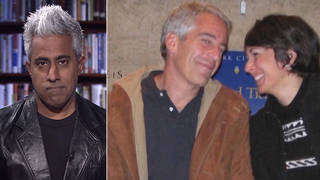
By Amy Goodman with Denis Moynihan
In her epic, Pulitzer Prize-winning book “The Guns of August,” historian Barbara Tuchman detailed how World War I began in 1914, and how the belligerence, vanity and poor policies of powerful leaders led millions to gory deaths in that four-year conflagration. Before people realized world wars had to be numbered, World War I was called “The Great War” or “The War to End All Wars,” which it wasn’t. It was the first modern war with massive, mechanized slaughter on land, sea and in the air. We can look at that war in retrospect, now 100 years after it started, as if through a distant mirror. The reflection, where we are today, is grim from within the greatest war-making nation in human history, the United States.
In the early years of the 20th century, the leaders of the nations of Europe had contrived a web of alliances, each treaty binding one country to join in the defense of another in the event of war. When the Austrian emperor’s son, Archduke Franz Ferdinand, visited Sarajevo on June 28, 1914, 19-year-old Serbian nationalist Gavrilo Princip assassinated him. As Barbara Tuchman writes in her book, published in 1962, Austria-Hungary attacked Serbia, which set off a chain reaction, involving Russia, France, Belgium and Great Britain in the war against Austria-Hungary, Germany and the Ottoman Empire.
After the war plans of the various powers failed, a period of brutal trench warfare began, with millions of lives lost under a relentless barrage of mortars, machine guns, mustard gas and newfangled airplanes outfitted with machine guns and bombs. By the war’s end, an estimated 9,700,000 soldiers would be dead, along with 6,800,000 civilians killed.
What, if anything, have we learned from the disaster of World War I? Look no farther than Gaza, or Ferguson, Mo. After nearly 50 days of the bombardment of Gaza with Israel’s intensely lethal, high-tech, U.S.-funded arsenal, Palestinian health officials put the number of Gazans killed at 2,139, of whom over 490 were children. Israel reported 64 soldiers killed as a result of its ground invasion of Gaza, with six civilians dead. The narrow Gaza Strip, one of the most densely populated places on Earth, suffering under an Israeli-imposed state of siege, is now a pile of rubble through which people pick, searching for the bodies of loved ones.
In Ferguson, police violence has provoked protests and a national debate after police officer Darren Wilson shot and killed unarmed, African-American teenager Michael Brown just days before Brown was to head off to college. The small St. Louis suburb of Ferguson has a fully militarized police force, with body armor, armored personnel carriers, and automatic weapons. If images from Ferguson looked like the streets of Baghdad or Kabul, it was no coincidence: The U.S. military has a program to distribute surplus war-making materiel to municipal police forces. It is less burdensome for a budget-constrained Pentagon to fob off its unwanted heavy armor to local police, rather than maintaining a large inventory. But why do our police need weapons of war?
The United States spent $640 billion on arms in 2013, according to the Stockholm International Peace Research Institute, out of a global total of $1.7 trillion. Increased arms expenditures in other nations, notably China and Russia, indicate they aren’t comfortable with the United States being the sole global superpower.
What do these trillions spent on arms get us? In a word: war.
Gaza is just one example. Syria’s civil war grinds on through its third year, with over 200,000 killed. The militant group ISIS has taken control of vast swaths of Syria and Iraq. Its brutal success is, in part, another example of blowback against the disastrous U.S. invasion and occupation of Iraq, further fueled by anger over Israel’s devastation of Gaza. Libya, “liberated” by NATO airstrikes, is in a state of violent anarchy. Conflicts still rage, virtually unreported, in South Sudan, and in the sites of ongoing “Dirty Wars” waged by the U.S., as reported by Jeremy Scahill in his book of that title, in Yemen, Somalia and Afghanistan. Violence in Ukraine has increased, according to the United Nations, with 1,200 people killed in the last month alone.
The millions killed pointlessly in World War I are mostly forgotten, a century on. Barbara Tuchman closed “The Guns of August,” closer to the 50th anniversary of that war, writing, “The nations were caught in a trap … a trap from which there was, and has been, no exit.” But there is a force more powerful than the governments of all these nations: the power of people everywhere, saying no. War is not the answer to conflict in the 21st century.
Amy Goodman is the host of Democracy Now!, a daily international TV/radio news hour airing on more than 1,200 stations in the U.S. and around the world. She is the co-author of “The Silenced Majority,” a New York Times best-seller.
© 2014 Amy Goodman / Distributed by King Features Syndicate
Listen and share Amy Goodman’s weekly podcast on SoundCloud.











Media Options